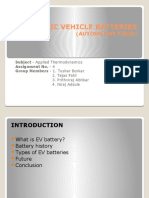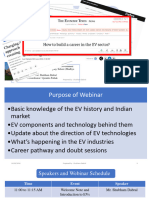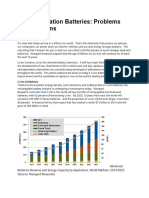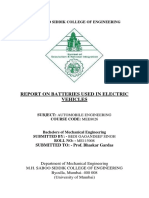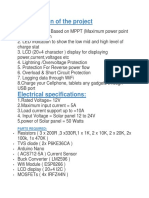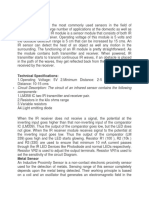0% found this document useful (0 votes)
35 views1 pageEV Battery Evolution and Market Trends
The document discusses the history and chemistry of electric vehicle batteries. It notes that a 1994 report identified 10 candidate battery systems for EVs ranging in specific energy from lead-acid to lithium-polymer batteries. Today, lithium-ion batteries dominate the EV market due to their higher power output, specific energy, and fewer problems compared to previous technologies like nickel-metal hydride. However, EVs have yet to achieve widespread adoption globally and gasoline vehicles still dominate the market, especially for long-distance travel, due to limitations in battery technology.
Uploaded by
VimalCopyright
© © All Rights Reserved
We take content rights seriously. If you suspect this is your content, claim it here.
Available Formats
Download as DOCX, PDF, TXT or read online on Scribd
0% found this document useful (0 votes)
35 views1 pageEV Battery Evolution and Market Trends
The document discusses the history and chemistry of electric vehicle batteries. It notes that a 1994 report identified 10 candidate battery systems for EVs ranging in specific energy from lead-acid to lithium-polymer batteries. Today, lithium-ion batteries dominate the EV market due to their higher power output, specific energy, and fewer problems compared to previous technologies like nickel-metal hydride. However, EVs have yet to achieve widespread adoption globally and gasoline vehicles still dominate the market, especially for long-distance travel, due to limitations in battery technology.
Uploaded by
VimalCopyright
© © All Rights Reserved
We take content rights seriously. If you suspect this is your content, claim it here.
Available Formats
Download as DOCX, PDF, TXT or read online on Scribd
/ 1






